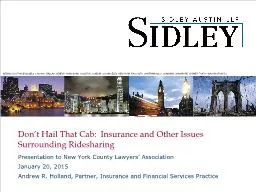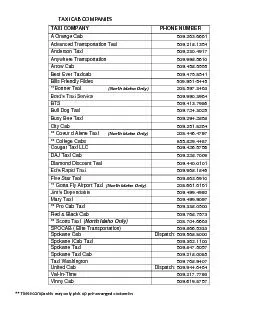PPT-Don’t Hail That Cab: Insurance and Other Issues Surrounding Ridesharing
Author : luanne-stotts | Published Date : 2019-12-07
Dont Hail That Cab Insurance and Other Issues Surrounding Ridesharing Presentation to New York County Lawyers Association January 20 2015 Andrew R Holland Partner
Presentation Embed Code
Download Presentation
Download Presentation The PPT/PDF document "Don’t Hail That Cab: Insurance and Ot..." is the property of its rightful owner. Permission is granted to download and print the materials on this website for personal, non-commercial use only, and to display it on your personal computer provided you do not modify the materials and that you retain all copyright notices contained in the materials. By downloading content from our website, you accept the terms of this agreement.
Don’t Hail That Cab: Insurance and Other Issues Surrounding Ridesharing: Transcript
Download Rules Of Document
"Don’t Hail That Cab: Insurance and Other Issues Surrounding Ridesharing"The content belongs to its owner. You may download and print it for personal use, without modification, and keep all copyright notices. By downloading, you agree to these terms.
Related Documents














